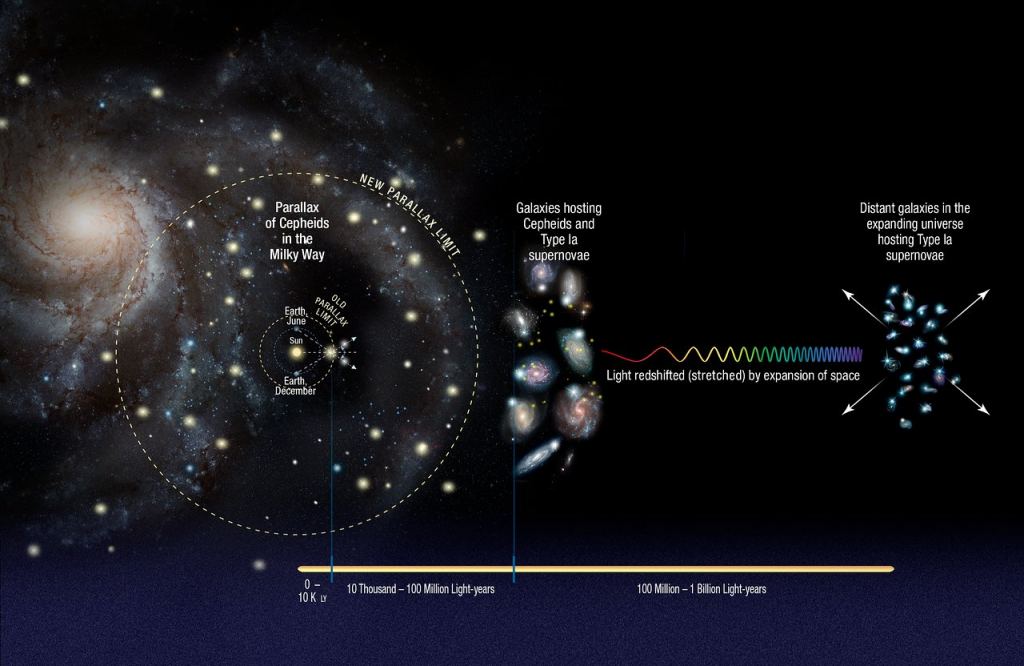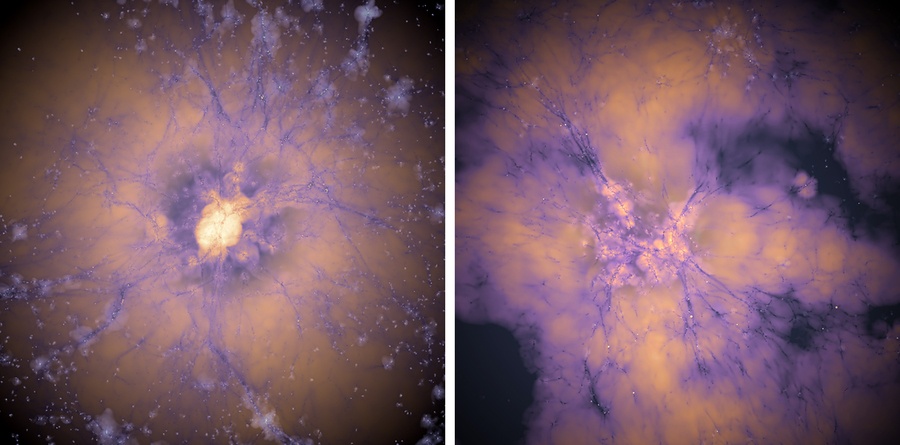Of all the mysteries facing astronomers and cosmologists today, the “Hubble Tension” remains the most enduring! This term refers to the apparent inconsistency of the expansion of the universe (aka. the Hubble constant) when local measurements are compared to measurements of the cosmic microwave background (CMB). Astronomers hoped that observations of the oldest galaxies in the universe by the James Webb Space Telescope (JWST) would solve this mystery. Unfortunately, Webb confirmed that the previous measurements were correct, so the “tension” remains.
Since JWST made its observations, many scientists have proposed that the existence of early dark energy (EDE) could explain the Hubble strain. In a recent study supported by NASA and the National Science Foundation (NSF), researchers at the Massachusetts Institute of Technology (MIT) suggested that EDE could solve two cosmological mysteries. In addition to the Hubble strain, this could explain why Webb observed so many galaxies during the early universe. According to current cosmological models, the universe should have been much less populated at that time.
The research was led by Xuejian Shen and colleagues from the Department of Physics and the Kavli Institute for Astrophysics and Space Research (MTK) at MIT. They were joined by researchers from NSF’s Artificial Intelligence and Fundamental Interactions Institute (IAIFI) at MIT, the University of Texas at Austin and the Kavli Institute for Cosmology (KICC) and the Cavendish Laboratory at the University of Cambridge. A paper detailing their findings was recently published in Monthly Notices of the Royal Astronomical Society.

To summarize, dark energy is the theoretical form of energy that is thought to be driving the expansion of the universe today. This theory first appeared in the 1990s to explain the observations of the Hon Hubble Space Telescopewhich showed that the cosmic expansion is accelerating with time. The EDE is similar, but is thought to have appeared briefly shortly after the Big Bang, disappearing after affecting the expansion of the early universe. Like dark energy, this force would counteract the gravitational pull of early galaxies and temporarily accelerate the expansion of the universe.
The existence of this energy would also explain why measurements of the Hubble constant are inconsistent with each other. In addition to General Relativity being wrong (despite being proven repeatedly for over a century), EDE is considered the most likely solution to the Hubble tension. Similarly, Webb’s observations in 2023 revealed a surprising number of bright galaxies just 500 million years after the Big Bang that were comparable in size to the modern Milky Way. These findings challenge conventional models of galaxy formation, which predict that galaxies take billions of years to form and grow.
For their study, the team focused on the formation of “Dark Matter Halos,” a hypothetical region that allows protogalaxies to accumulate gas and dust, leading to star formation and growth. As stated in a recent MIT News story:
“The bright galaxies seen by JWST would look like a cluster of lights around major cities, while theory predicts something like light in more rural settings, such as Yellowstone National Park. And we don’t expect such a clumping of light so soon. We believe that dark matter halos are the invisible skeleton of the universe. Dark matter structures form first, and then galaxies form within these structures. Thus, we expect that the number of bright galaxies should be proportional to the number of large dark matter haloes.

The team developed an empirical framework for early galaxy formation that included six main “cosmological parameters” – basic mathematical terms that describe the evolution of the universe. This includes the Hubble constant, which describes the cosmic expansion, while the parameters describe the density fluctuations immediately after the Big Bang, from which the dark matter halos formed. The team theorized that if the EDE affected the early cosmic expansion, it could also affect other parameters that could explain the appearance of many large galaxies soon after.
To test their theory, the team modeled the formation of galaxies during the first hundreds of millions of years of the universe. This model incorporated EDE to determine how early dark matter structures evolved to give rise to the first galaxies in the Universe. As study co-author Rohan Naidu, a postdoctoral fellow with MKI, explained:
“You have these two looming open-ended puzzles. We find that early dark energy is actually a very elegant and sparse solution to two of the most pressing problems in cosmology. We show that the skeletal structure of the early universe is subtly altered, where the amplitude of the fluctuations increases and you get larger haloes and brighter galaxies that were in place at earlier times, more so than in our vanilla. models. It means that things were more abundant and more clustered in the early universe.”
“We have shown the potential of early dark energy as a unified solution to two major problems facing cosmology,” added co-author Mark Vogelsberger, professor of physics at MIT. “This may be proof of its existence if the JWST observational findings are further consolidated. In the future, we can incorporate this into large cosmological simulations to see what detailed predictions we get.”
Further reading: MIT Reports, MNRAS
#Early #dark #energy #solve #biggest #mysteries #cosmology